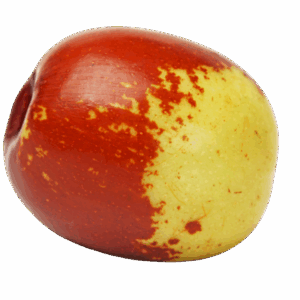The jujube, scientifically known as Ziziphus jujuba, is a fruit with a rich history and growing popularity in the United States. Often called the Chinese date, jujube has been cultivated for over 4,000 years, originating in China and spreading across Asia, the Middle East and parts of Europe. Its journey reflects both cultural significance and agricultural adaptability, making it an intriguing crop for modern American growers. Jujubes are valued for their sweet, apple-like flavor and nutritional benefits—high in vitamin C, antioxidants and fiber, and can be used fresh, dried or in teas to promote health.
In the United States, jujubes were introduced in the early 20th century by the USDA in 1908 for experimental cultivation. By the 1920s, horticulturist Frank Meyer brought superior Chinese cultivars to America, sparking interest in states like California, Texas and New Mexico. Jujubes gained traction as a commercial crop in the late 20th century as demand for exotic, sustainable fruits grew. Today, Bob Wells Nursery offers many cultivars which are popular for their large, flavorful fruit and can be eaten fresh or dried, including:
- Li
- Lang
- GA866
- Sugar Cane
- Honey Jar
- Shanxi Li
- Xian Beauty
- Coco
GROWING REQUIREMENTS
Growing jujubes in the U.S. requires attention to climate, soil and care practices, but their hardiness makes them an extremely low-maintenance choice. Jujubes thrive in USDA Hardiness Zones 6–9, tolerating temperatures from -10°F to over 100°F. They prefer hot, sunny climates, making the Southwest and Southeast ideal, although they’re adaptable to various other regions with proper care. Well-drained, slightly alkaline soil (pH 6.5–7.5) is optimal, but jujubes tolerate poor soils, including sandy or clay types. While they are drought-resistant, young jujube trees need regular watering to become established.
PLANTING
Planting should occur in spring to allow root development before winter. Select grafted cultivars for consistent fruit quality, spacing trees 15–20 feet apart to accommodate their spreading growth. Some jujubes are self-pollinating, but cross-pollination between varieties can boost yields.
MAINTENANCE
Jujubes are easy to maintain and pruning is minimal—focus on removing dead or crowded branches to keep an open canopy for sunlight and air circulation. Prune in late winter or early spring before new growth emerges. Control root suckers by mowing or hoeing to prevent unwanted growth. Light applications of a balanced fertilizer during the growing season can promote growth. Pests and diseases are rarely significant.

HARVESTING
Harvest typically occurs in late summer to early fall, when fruits turn reddish-brown and slightly wrinkled. Fresh jujubes are crisp and sweet, while dried ones develop a chewy, date-like texture.


